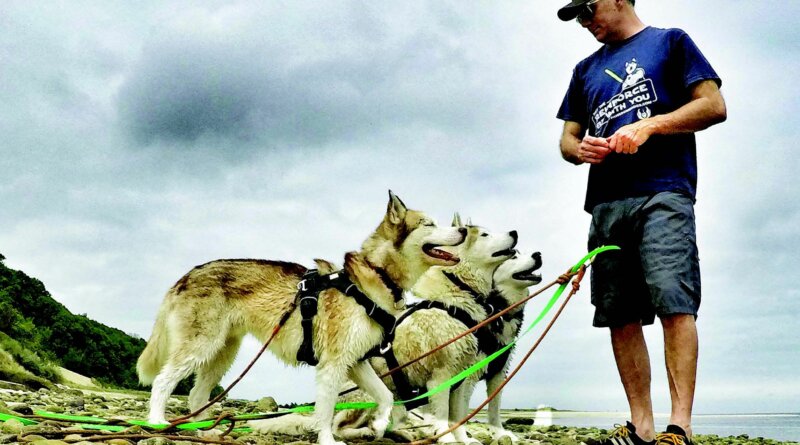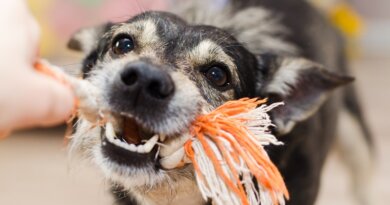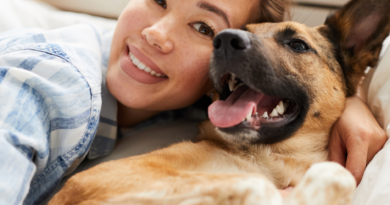How to Get and Maintain Attention – Dogster
Getting our dogs’ attention is truly a foundation skill. It’s a signal for your dog to look toward you and to be mindful of what will follow. This can be a verbal signal, such as their name, or an audible signal like a “kissy” noise.
Get attention
I personally have two ways of getting my dogs’ attention. Both of my dogs were conditioned in this exact same manner. Each has a different schedule of reinforcement connected to them.
- Saying their names
- The kissy sound
So what’s the difference? By saying their name, they are likely to pay attention to me. With the “kissy” sound, they are extremely likely to pay attention to me because it has a stronger connection to the conditioned response plus it has an associated higher value to it. (See info box on page 34.)
Saying my dogs’ names gets their attention, and my dogs feel good when I say their name. This is because of the history of reinforcement and affection associated with their names. I also speak about them when they’re in the room with me, talking about them on the phone saying their name to my friends. In these instances my dogs are not actively getting reinforced. I also never scold my dogs, and I don’t use their names to scold them, so the response is always reliable and not associated with avoidance that comes with being reprimanded.
With an audible signal — the kissy sound — I always reinforce the outcome of getting their attention and that gets their attention more often because the outcome is a certainty. It’s a promise that is never broken between teammates, just like when they are seeking my attention, they get it in return.
Don’t bark!
We do not need to be loud or rude to get our dogs’ attention. Intonation, the rise and fall of the voice and speaking, never needs to be a form of intimidation. Dogs can hear sounds from four times the distance of humans. A human can hear from 20 feet while a dog can hear from 80 feet. Hence there is zero need to yell at dogs.

Engage the seeking system
Being interactive — like that of an entertaining tour guide — engages your dog’s seeking system — the parts of the brain connected to the mesolimbic and mesocrotical systems (both a network of neurons in the brain) associated with goal-directed behaviors and strongly influenced by dopamine.
Think of it as the system responsible for our motivated actions in relation to survival and desires, as well as the urge to explore and the desire to understand. The seeking system further activates when lower brain regions have interactions with upper brain regions. Add in some dopamine (the motivational chemical of the brain) with interaction like play, attention and things our learners enjoy, and they are more likely to attentively engage with us. (For more on the seeking system check out Dr. Jaak Panksepp’s Ted Talks. )
Keep attention
Being interactive and interested helps to keep your dog’s attention and, to do this, you need to be both present and mindful. When our dogs show interest in something, that is when their seeking system can be nurtured.
Verbal engagement, such as “Is that an interesting smell?” when they stop to smell a spot or “Does this way look interesting?” when a dog chooses a safe direction to go in. When we engage with our dogs in these experiences, we’re increasing the flow of motor neurons in the brain while strengthening the connections between us and our dogs and the novel experiences shared.
I observe people that instinctively do this all the time with their dogs in parks, on walks and in their yards. The dog sees a squirrel and the human says “Look, a squirrel!”
Being flexible with what our dogs are interested in is also vital to encourage sharing the joy of new, novel experiences and nurtures the seeking system. The more often brain areas are engaged, the more strengthened the pathways become. The more actively we participate with one another, the deeper we share the experience of the seeking system. The dopamine rush, which boosts motivation in these experiences associates these experiences with learning and the connection between those involved.

Rate of reinforcement
Rate of reinforcement is the amount of reinforcers issued per a period of time. There’s nothing wrong with increasing your rate of reinforcement to maintain your dog’s attention. Think of it like this. We are turning up the rate of reinforcement so high as to attempt to drown out everything else except for the stream of reinforcers being issued, much like turning up the volume on your television while the neighbor is mowing her grass outside your window.
For example, you see a probable trigger in the distance approaching you and your dog on a wide pathway. You can use an audible signal or verbal request to bring your dog’s attention to you while beginning to issue a high rate of pea-sized reinforcers maintaining and motivating your dog’s attention. This is done as a
continuous rate of reinforcement until the stimulus passes by and moves once again outside of your dog’s bubble of reactivity.
If ever there was a battle of wills, it is between the intrinsic and extrinsic motivation. Reinforcement a dog gets out of doing something she loves and enjoys versus reinforcement given to her from an outside source she loves and enjoys.
Be interested
Take interest in what your dog takes interest in to interact with and motivate her. Not in an annoying way, not in a harassing way, not bugging her relentlessly until she pays attention but by being a reliable and actively present source of motivation. This nurtures her seeking system.
It also nurtures your relationship with her active mind, which positively affects the interaction and attention of all your team members. Provide interaction, encouragement and reliable outcomes, and you will see an increase in reliability from your dog, your teammate in life.
How to reinforce the attention cue
- Prepare 10 pea-sized pieces of food that you know your dog loves, like small cubes of cheese. This conditioned stimulus (the beloved cheese) forms an association to the unconditioned stimulus (her name or audible signal like the “kissy” sound).
- Say your dog’s name, then deliver one high reward, aka cube of cheese.
- Repeat this process immediately after your dog stops chewing the first piece of cheese.
- Then say your dog’s name again and deliver a second piece of cheese.
Do this at a rate of one piece of cheese every 5 to 10 seconds.

Attention-getting products
Reinforce your dog’s attention cue with yummy tidbits. These new treats may just be what your dog was asking for.
Ziwi Good Dog Rewards Air-Dried Venison Dog Treats. Also comes in beef or lamb. $16.88. chewy.com
Zuke’s Mini Naturals Dog Treats Rabbit Recipe. Also comes in Duck recipe. $15.99. chewy.com
K9 Connoisseur Slow Roasted Beef Lung Bites. $13.49/8-ounce pack. amazon.com




cheap kamagra https://kamagra.icu/# – Kamagra tablets